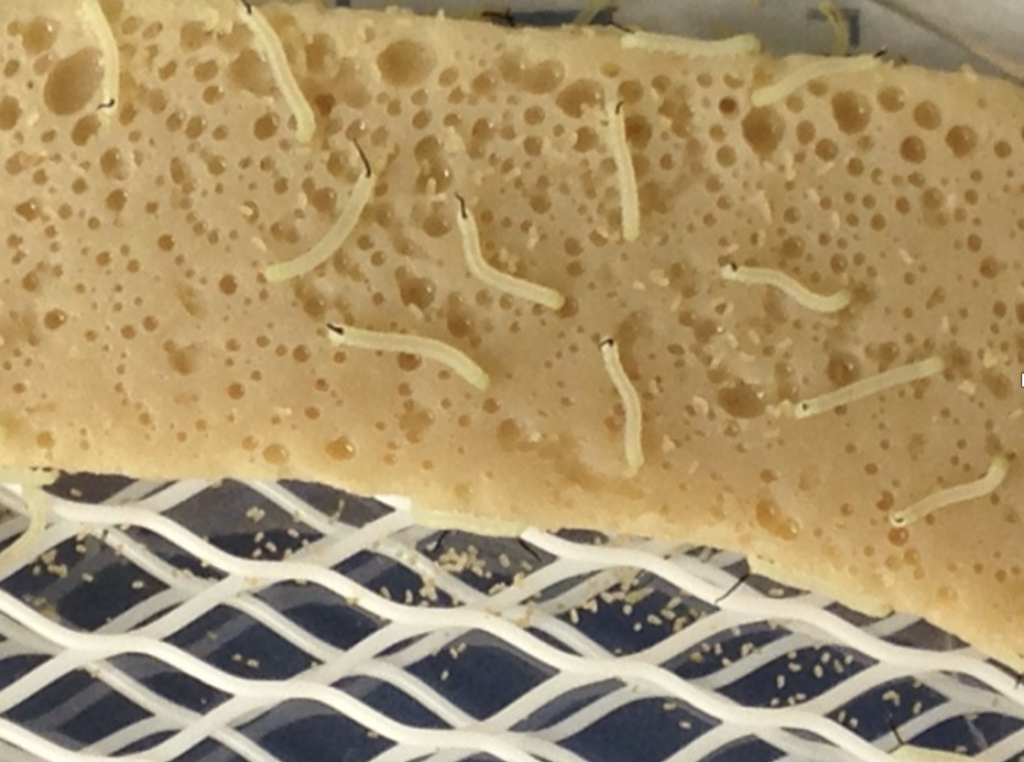Yesterday (December 17, 2020) we finished the 6th out of 8 “synchronous” (= live) classes in the 3rd course in insect rearing systems. Our classes consist of small groups of professionals in insect rearing and some students who are especially interested in the science of rearing insects. As a long-time teacher, I have been very pleased with the dynamics of the live, Zoom-based classes. Through the “Share Screen” function, I can deliver lectures that consist of PowerPoint and videos, with some “live action” demonstrations.
For example, in yesterday’s lecture, I guided the students through an experiment based on design of experiments format (from JMP by SAS). We used the JMP full-factorial analysis program to set up an experiment with types of gelling agents and types of beans as variables that we planned to test.

Figure December 17, 2020. Manduca sexta neonates on new bean diet.
What was most rewarding for me (and I hope for the students) was that we were able to interactively (students, teacher, and JMP system) set up the experiment, so that over the next week, we can use the JMP system to interpret the outcome of this experiment. We formulated hypotheses about the outcomes (would agar be a superior gelling agent over carrageenan; would pinto beans be a superior nutrient source than soy beans?) More about this in my next entry.
